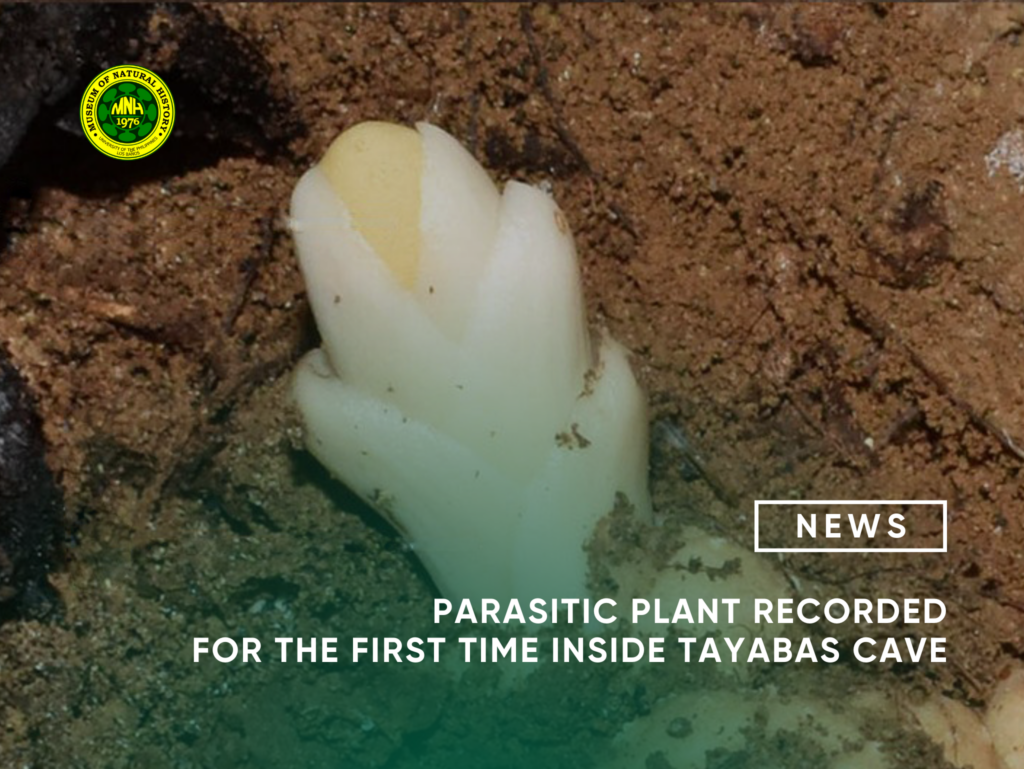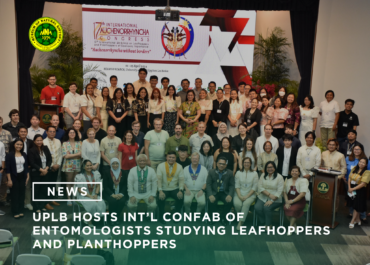
Researchers from the UPLB Museum of Natural History and staff of its NICER CAVES (Center for Cave Ecosystems Research) Program recently reported a new habitat use record for Balanophora abbreviata Blume 1827, a plant that parasitizes the roots of other plants.
In a paper in the Journal of Asia-Pacific Biodiversity (https://doi.org/10.1016/j.japb.2023.11.012) published by Elsevier, the researchers led by Dr. Ireneo L. Lit, Jr. described in detail the first record of Balanophora to thrive in cave ecosystems, specifically in Dry Cave I, Tayabas, Quezon here in the Philippines.
The authors also discussed the plant’s significance, especially as food source of other organisms, particularly arthropods, within the cave food web.
B. abbreviata is a unique flowering plant, the paper’s authors wrote. It is holoparasitic – it cannot produce its own food through photosynthesis and just derives water and nutrients from other plants (host) to survive. “They do not require sunlight to grow and multiply,” Dr. Lit, the lead author said in an interview.
Members of the Balanophora genus have been widely recorded in tropical and subtropical regions, growing in shaded areas with sandy but nutrient-rich soil, coastal forests, lower to mid- montane forests, and mossy forests.
In the Philippines, four native species of Balanophora can be found: B. abbreviata Blume, B. fungosa J.R. Forster and G. Forster, B. papuana Schlechter, and B. coralliformis Barcelona et al. B. abbreviata is distinct from other Philippine species by its single erect stalk, yellow scale-leaves and sessile male florets.
In January 2022, during a recon survey in one of NICER CAVES Program study sites, the research team first observed the plant in the cave’s twilight zone. The plant specimens were later collected in December 2022. “It was attached to the roots of a host, possibly Ficus plants growing outside the cave, which have penetrated through rock crevices,” the researchers reported.
The absence of light in caves make it a hostile environment for plants to thrive in. Hence, plants, except for tree roots, are rarely found in extreme habitats such as caves. “So, we were really amazed to see this plant inside the cave,” he added.
The collected plant specimens were deposited at the UPLB Museum of Natural History’s Forestry Herbarium and Wood Collection, while associated arthropods found on and with the plants have been deposited in the Entomology Collection of the Museum.
The authors observed ants (Pheidole sp.) and a cockroach (Megamareta sp.) on the plant found in Dry Cave I, which were some of the pollinators observed of Balanophora in previous studies in other countries. Other associated arthropods include nymphs of cave crickets, springtails, and flat-back millipedes which presumably consume dead and decaying matter inside the cave.
Observing the holoparasitic plant inside the dry cave provides more reason to make efforts in proper use of the cave’s resources. According to the team, the plant is able to obtain nutrients from its host which largely grows outside the cave and makes it available for cave-dwelling organisms.
“We found organisms feeding on the young fleshy portions of the plant,” the researchers shared. They observed that B. abbreviata plants have become part of the food web involving the community of arthropods in the cave.
“Arthropods, for example, greatly benefit from the presence of the B. abbreviata inside the cave,” Dr. Lit said. He added that the arthropods confined to the cave are able to access additional sources of food and energy.
According to the researchers, plants which are able to thrive inside the cave must be better protected. Plants in caves provide some readily available sources of energy to arthropods.
“These arthropods in turn serve as food for larger animals or help degrade decomposing matter into materials that are absorbed by tree roots in the cave,” Lit explained.
Search
Archives
Categories
- Announcement (21)
- Feature (21)
- News (141)
- Press Release (55)
- Research (4)
- Services (3)



